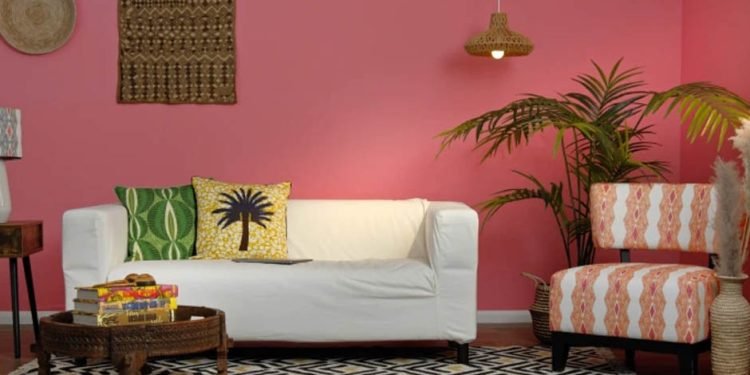Before delving into the intricacies of colour theory in interior design, start with the basics. It studies how colours interact and the visual effects they create when combined. It encompasses various elements, including the colour wheel and schemes. Understanding these foundational concepts is crucial for anyone undertaking an Interior Design Course, as it allows you to utilize hues in your design projects effectively. By grasping the principles of such theory, you can create harmonious and visually appealing spaces that evoke the desired emotions and atmospheres.
The Wheel Guide to Harmony
A colour wheel is a basic tool in colour theory that helps designers understand how colours relate. It consists of primary hues (red, blue, and yellow), secondary hues (orange, green, and violet), and tertiary hues (yellow-orange, red-orange, red-violet, etc.). The arrangement of colours on the wheel provides insight into their relationships and aids in creating harmonious coloured schemes.
Creating Balance and Contrast
A well-executed color scheme can significantly impact the overall aesthetic of a space, as observed by Rent Appeal, a leading Atlanta property management company. There are several popular schemes that designers employ to achieve specific effects:
- Monochromatic: This scheme uses variations of a single shade to create a sense of harmony and simplicity.
- Analogous: Analogous shades are adjacent to each other on the colour wheel. This scheme creates a visually pleasing and cohesive look.
- Complementary: Complementary shades are located opposite each other on the wheel. They create a vibrant contrast and energize the space.
- Split-Complementary: This scheme involves a base hue and two shades adjacent to its complementary colour. It offers a balanced yet dynamic visual effect.
- Triadic: Triadic schemes utilize three shades equidistant from each other on the wheel. It produces a vibrant and visually stimulating composition.
Mastering Color Theory in Interior Design
- Start with a Neutral Base: Begin by selecting a neutral palette as the foundation of your design. Neutrals such as white, beige, or grey provide a versatile canvas for incorporating accent colours.
- Consider Space and Purpose: Different colours have varying effects on the perception of space. Light colours make a room appear big and spacious, while dark shades create an intimate atmosphere. Consider the purpose of the space and select hues accordingly.
- Balance Warm and Cool Tones: Combining warm and cool tones can create visual interest and balance. Warm hues, like reds and yellows, can be balanced with cool tones, like blues and greens, to achieve a harmonious composition.
- Pay Attention to Lighting: Lighting can significantly impact how colours appear in space. Natural light enhances the true colours, while artificial lighting can alter their perception. Consider the room’s lighting conditions when selecting and placing hues.
- Experiment with Accent Colors: Accent shades add depth and personality to your design. Use them sparingly to draw attention to specific areas or elements in the space.
- Consider the Flow: Maintain a sense of flow and coherence throughout the space using colour transitions and repetitions. Shades should complement one another and create a sense of visual unity.
By incorporating these tips into your interior design projects, you can effectively apply colour theory principles to create spaces that are visually appealing, harmonious, and reflective of your style. It’s essential to grasp these fundamental concepts to pursue an Interior Design Course. It will enable you to use colours efficiently in your design projects.
Conclusion
In conclusion, mastering colour theory is essential for anyone interested in interior design. By understanding the basics of this theory, utilizing the wheel, and exploring different schemes, you can create aesthetically pleasing spaces that evoke the desired emotions and atmosphere. Whether pursuing an interior designing course or simply seeking to enhance your home, this theory is a powerful tool that can transform any space into a work of art. So embrace the world of colours, and create your aesthetic harmony!












